Bert详细学习及代码实现详解
BERT概述
BERT的全称是Bidirectional Encoder Representation from Transformers,即双向Transformer的Encoder,因为decoder是不能获要预测的信息的。在大型语料库(Wikipedia + BookCorpus)上训练一个大型模型(12 层到 24 层 Transformer)很长时间(1M 更新步骤),这就是 BERT。
-
模型的主要创新点都在pre-train方法上,即用了
Masked LM和Next Sentence Prediction两种方法分别捕捉词语和句子级别的representation。- Masked LM --> word
- Next Sentence Prediction --> sentence
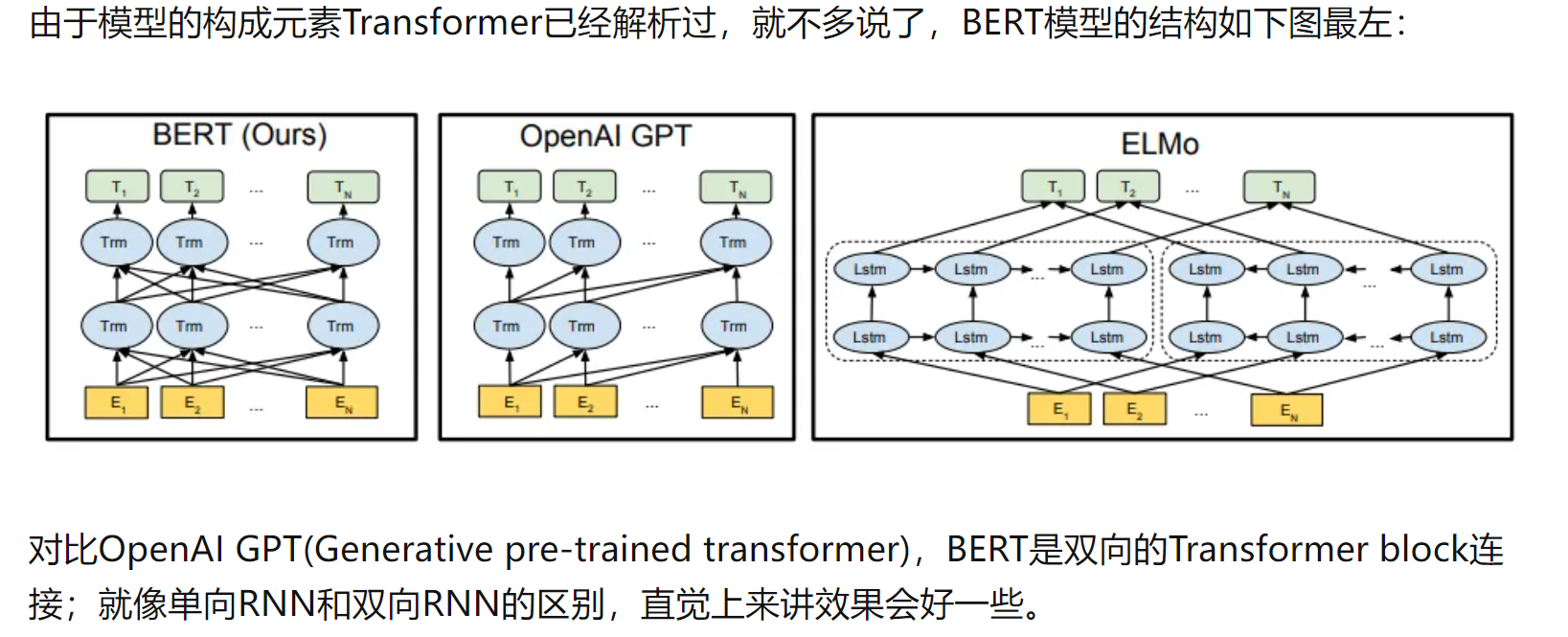
Mask掩码
在原始预处理代码中,我们随机选择 WordPiece 标记进行掩码。
例如:
Input Text: the man jumped up , put his basket on phil ##am ##mon ' s head
Original Masked Input: [MASK] man [MASK] up , put his [MASK] on phil [MASK] ##mon ' s head
全字掩码改进:
Whole Word Masked Input: the man [MASK] up , put his basket on [MASK] [MASK] [MASK] ' s head
改进思想:
训练是相同的——我们仍然独立预测每个屏蔽的 WordPiece 标记。改进来自于这样的事实:对于已拆分为多个 WordPieces 的单词,原始预测任务过于“简单”。
- 一次预测一个mask太简单了,把原来的mask周围的词全部都mask掉,提高难度。
Enmbedding
三种Embedding求和构成的:

- Token Embeddings是词向量,第一个单词是CLS标志,可以用于之后的分类任务
- Segment Embeddings用来区别两种句子,因为预训练不光做LM还要做以两个句子为输入的分类任务
- Position Embeddings和之前文章中的Transformer不一样,不是三角函数而是学习出来的
Pre-training Task 1: Masked Language Model
为什么要bidirection?
意思就是如果使用预训练模型处理其他任务,那人们想要的肯定不止某个词左边的信息,而是左右两边的信息。
- 在训练过程中作者
随机mask 15%的token,而不是把像cbow一样把每个词都预测一遍。最终的损失函数只计算被mask掉那个token。
Input: the man went to the [MASK1] . he bought a [MASK2] of milk.
Labels: [MASK1] = store; [MASK2] = gallon
mask的技巧:
Mask如何做也是有技巧的,如果一直用标记[MASK]代替(在实际预测时是碰不到这个标记的)会影响模型,所以随机mask的时候10%的单词会被替代成其他单词,10%的单词不替换,剩下80%才被替换为[MASK]。
- 要注意的是Masked LM预训练阶段模型是不知道真正被mask的是哪个词,所以模型每个词都要关注。
sequence_length:
- 因为序列长度太大(512)会影响训练速度,所以90%的steps都用
seq_len=128训练,余下的10%步数训练512长度的输入。
Pre-training Task 2: Next Sentence Prediction
因为涉及到QA和NLI之类的任务,增加了第二个预训练任务
- 目的是让模型理解两个句子之间的联系。训练的输入是句子A和B,B有一半的几率是A的下一句,输入这两个句子,模型预测B是不是A的下一句。预训练的时候可以达到97-98%的准确度。
注意:作者特意说了语料的选取很关键,要选用document-level的而不是sentence-level的,这样可以具备抽象连续长序列特征的能力。
Sentence A: the man went to the store .
Sentence B: he bought a gallon of milk .
Label: IsNextSentence
Sentence A: the man went to the store .
Sentence B: penguins are flightless .
Label: NotNextSentence
fine-tuning
code:run_classifier.py / run_squad.py(tpu)
Sentence (and sentence-pair) classification tasks
在运行此示例之前,您必须通过运行此脚本下载 GLUE 数据并将其解压到某个目录 $GLUE_DIR 。接下来,下载 BERT-Base 检查点并将其解压缩到某个目录 $BERT_BASE_DIR 。
此示例代码在 Microsoft Research Paraphrase Corpus (MRPC) 语料库上微调 BERT-Base ,该语料库仅包含 3,600 个示例,并且可以在大多数 GPU 上在几分钟内进行微调。
export BERT_BASE_DIR=/path/to/bert/uncased_L-12_H-768_A-12
export GLUE_DIR=/path/to/gluepython run_classifier.py \--task_name=MRPC \--do_train=true \--do_eval=true \--data_dir=$GLUE_DIR/MRPC \--vocab_file=$BERT_BASE_DIR/vocab.txt \--bert_config_file=$BERT_BASE_DIR/bert_config.json \--init_checkpoint=$BERT_BASE_DIR/bert_model.ckpt \--max_seq_length=128 \--train_batch_size=32 \--learning_rate=2e-5 \--num_train_epochs=3.0 \--output_dir=/tmp/mrpc_output/
***** Eval results *****eval_accuracy = 0.845588eval_loss = 0.505248global_step = 343loss = 0.505248
训练完分类器后,您可以使用 --do_predict=true 命令在推理模式下使用它。输入文件夹中需要有一个名为 test.tsv 的文件。输出将在输出文件夹中名为 test_results.tsv 的文件中创建。每行将包含每个样本的输出,列是类概率。
export BERT_BASE_DIR=/path/to/bert/uncased_L-12_H-768_A-12
export GLUE_DIR=/path/to/glue
export TRAINED_CLASSIFIER=/path/to/fine/tuned/classifierpython run_classifier.py \--task_name=MRPC \--do_predict=true \--data_dir=$GLUE_DIR/MRPC \--vocab_file=$BERT_BASE_DIR/vocab.txt \--bert_config_file=$BERT_BASE_DIR/bert_config.json \--init_checkpoint=$TRAINED_CLASSIFIER \--max_seq_length=128 \--output_dir=/tmp/mrpc_output/
影响内存使用的因素有:
-
max_seq_length :发布的模型使用高达 512 的序列长度进行训练,但您可以使用更短的最大序列长度进行微调以节省大量内存。这是由示例代码中的 max_seq_length 标志控制的。
-
train_batch_size :内存使用量也与批量大小成正比。
-
模型类型, BERT-Base 与 BERT-Large : BERT-Large 模型比 BERT-Base 需要更多的内存。
-
优化器:BERT的默认优化器是Adam,它需要大量额外的内存来存储 m 和 v 向量。切换到内存效率更高的优化器可以减少内存使用量,但也会影响结果。我们还没有尝试过其他优化器进行微调。
代码详解
class InputExample(object):"""A single training/test example for simple sequence classification."""def __init__(self, guid, text_a, text_b=None, label=None):"""Constructs a InputExample.Args:guid: Unique id for the example.text_a: string. The untokenized text of the first sequence. For singlesequence tasks, only this sequence must be specified.text_b: (Optional) string. The untokenized text of the second sequence.Only must be specified for sequence pair tasks.label: (Optional) string. The label of the example. This should bespecified for train and dev examples, but not for test examples."""self.guid = guidself.text_a = text_aself.text_b = text_bself.label = label
class DataProcessor(object):"""Base class for data converters for sequence classification data sets."""def get_train_examples(self, data_dir):"""Gets a collection of `InputExample`s for the train set."""raise NotImplementedError()def get_dev_examples(self, data_dir):"""Gets a collection of `InputExample`s for the dev set."""raise NotImplementedError()def get_test_examples(self, data_dir):"""Gets a collection of `InputExample`s for prediction."""raise NotImplementedError()def get_labels(self):"""Gets the list of labels for this data set."""raise NotImplementedError()@classmethoddef _read_tsv(cls, input_file, quotechar=None):"""Reads a tab separated value file."""with tf.gfile.Open(input_file, "r") as f:reader = csv.reader(f, delimiter="\t", quotechar=quotechar)lines = []for line in reader:lines.append(line)return lines
- XNLI(Cross-lingual Natural Language Inference)数据集是一个用于跨语言自然语言推理任务的数据集。它是在自然语言推理(NLI)任务的基础上进行扩展,旨在促进多语言之间的推理能力研究和跨语言模型的发展。
- XNLI数据集是在原始的英语NLI数据集SNLI(Stanford Natural Language Inference)的基础上构建的。它包含来自15种不同语言的句子对,涵盖了多种语言家族,如印欧语系、南亚语系、尼日尔-刚果语系等。每个语言都有约5,000个训练样本和2,500个开发样本。
- XNLI数据集的目标是通过将SNLI数据集翻译成其他语言,从而为多语言推理任务提供一个统一的基准。对于给定的句子对,模型需要判断它们之间的关系是蕴含(entailment)、矛盾(contradiction)还是中性(neutral)。通过在多语言上进行推理,可以评估模型在不同语言之间的泛化能力和跨语言理解能力。XNLI数据集的发布促进了跨语言自然语言处理的研究和发展,为构建能够处理多语言文本的模型提供了基准和评估标准。
- 取数据,注意是官方数据集的输入格式
class XnliProcessor(DataProcessor):"""Processor for the XNLI data set."""def __init__(self):self.language = "zh"def get_train_examples(self, data_dir):"""See base class."""lines = self._read_tsv(os.path.join(data_dir, "multinli","multinli.train.%s.tsv" % self.language))examples = []for (i, line) in enumerate(lines):if i == 0:continueguid = "train-%d" % (i)text_a = tokenization.convert_to_unicode(line[0])text_b = tokenization.convert_to_unicode(line[1])label = tokenization.convert_to_unicode(line[2])if label == tokenization.convert_to_unicode("contradictory"):label = tokenization.convert_to_unicode("contradiction")examples.append(InputExample(guid=guid, text_a=text_a, text_b=text_b, label=label))return examplesdef get_dev_examples(self, data_dir):"""See base class."""lines = self._read_tsv(os.path.join(data_dir, "xnli.dev.tsv"))examples = []for (i, line) in enumerate(lines):if i == 0:continueguid = "dev-%d" % (i)language = tokenization.convert_to_unicode(line[0])if language != tokenization.convert_to_unicode(self.language):continuetext_a = tokenization.convert_to_unicode(line[6])text_b = tokenization.convert_to_unicode(line[7])label = tokenization.convert_to_unicode(line[1])examples.append(InputExample(guid=guid, text_a=text_a, text_b=text_b, label=label))return examplesdef get_labels(self):"""See base class."""return ["contradiction", "entailment", "neutral"]
- 单条数据的输入格式
class InputFeatures(object):"""A single set of features of data."""def __init__(self,input_ids,input_mask,segment_ids,label_id,is_real_example=True):self.input_ids = input_idsself.input_mask = input_maskself.segment_ids = segment_idsself.label_id = label_idself.is_real_example = is_real_example- 转化成token的处理函数
def convert_single_example(ex_index, example, label_list, max_seq_length,tokenizer):"""Converts a single `InputExample` into a single `InputFeatures`."""# 如果是TPU上的话,要把每一个batch填满,需要padding的sentenceif isinstance(example, PaddingInputExample):return InputFeatures(input_ids=[0] * max_seq_length,input_mask=[0] * max_seq_length,segment_ids=[0] * max_seq_length,label_id=0,is_real_example=False)# id和label的一个映射关系label_map = {}for (i, label) in enumerate(label_list):label_map[label] = i# 句子变成token序列tokens_a = tokenizer.tokenize(example.text_a)tokens_b = Noneif example.text_b:tokens_b = tokenizer.tokenize(example.text_b)if tokens_b:# Modifies `tokens_a` and `tokens_b` in place so that the total# length is less than the specified length.# Account for [CLS], [SEP], [SEP] with "- 3"_truncate_seq_pair(tokens_a, tokens_b, max_seq_length - 3)else:# Account for [CLS] and [SEP] with "- 2"if len(tokens_a) > max_seq_length - 2:tokens_a = tokens_a[0:(max_seq_length - 2)]# The convention in BERT is:# (a) For sequence pairs:# tokens: [CLS] is this jack ##son ##ville ? [SEP] no it is not . [SEP]# type_ids: 0 0 0 0 0 0 0 0 1 1 1 1 1 1# (b) For single sequences:# tokens: [CLS] the dog is hairy . [SEP]# type_ids: 0 0 0 0 0 0 0## Where "type_ids" are used to indicate whether this is the first# sequence or the second sequence. The embedding vectors for `type=0` and# `type=1` were learned during pre-training and are added to the wordpiece# embedding vector (and position vector). This is not *strictly* necessary# since the [SEP] token unambiguously separates the sequences, but it makes# it easier for the model to learn the concept of sequences.## For classification tasks, the first vector (corresponding to [CLS]) is# used as the "sentence vector". Note that this only makes sense because# the entire model is fine-tuned.# 加入cls和sep到token中,构成inputtokens = []segment_ids = []tokens.append("[CLS]")segment_ids.append(0)for token in tokens_a:tokens.append(token)segment_ids.append(0)tokens.append("[SEP]")segment_ids.append(0)if tokens_b:for token in tokens_b:tokens.append(token)segment_ids.append(1)tokens.append("[SEP]")segment_ids.append(1)input_ids = tokenizer.convert_tokens_to_ids(tokens)# The mask has 1 for real tokens and 0 for padding tokens. Only real# tokens are attended to.input_mask = [1] * len(input_ids)# Zero-pad up to the sequence length.while len(input_ids) < max_seq_length:input_ids.append(0)input_mask.append(0)segment_ids.append(0)assert len(input_ids) == max_seq_lengthassert len(input_mask) == max_seq_lengthassert len(segment_ids) == max_seq_lengthlabel_id = label_map[example.label]if ex_index < 5:tf.logging.info("*** Example ***")tf.logging.info("guid: %s" % (example.guid))tf.logging.info("tokens: %s" % " ".join([tokenization.printable_text(x) for x in tokens]))tf.logging.info("input_ids: %s" % " ".join([str(x) for x in input_ids]))tf.logging.info("input_mask: %s" % " ".join([str(x) for x in input_mask]))tf.logging.info("segment_ids: %s" % " ".join([str(x) for x in segment_ids]))tf.logging.info("label: %s (id = %d)" % (example.label, label_id))feature = InputFeatures(input_ids=input_ids,input_mask=input_mask,segment_ids=segment_ids,label_id=label_id,is_real_example=True)return feature
- 句子对的任务
def _truncate_seq_pair(tokens_a, tokens_b, max_length):"""Truncates a sequence pair in place to the maximum length.这段代码是一个用于截断序列对的函数。它的作用是将序列对(tokens_a和tokens_b)截断到最大长度(max_length)。函数使用了一个简单的启发式方法来截断序列。它会逐个删除一个token,直到序列对的总长度小于等于最大长度。如果tokens_a的长度大于tokens_b的长度,则删除tokens_a的最后一个token;否则,删除tokens_b的最后一个token。这个截断函数的目的是确保序列对的总长度不超过最大长度,以便在处理序列对时能够满足模型的输入要求。通过逐个删除token,可以保留较长序列中更多的信息,从而更好地处理不同长度的序列对。"""# This is a simple heuristic which will always truncate the longer sequence# one token at a time. This makes more sense than truncating an equal percent# of tokens from each, since if one sequence is very short then each token# that's truncated likely contains more information than a longer sequence.while True:total_length = len(tokens_a) + len(tokens_b)if total_length <= max_length:breakif len(tokens_a) > len(tokens_b):tokens_a.pop()else:tokens_b.pop()
- 构建模型
def model_fn_builder(bert_config, num_labels, init_checkpoint, learning_rate,num_train_steps, num_warmup_steps, use_tpu,use_one_hot_embeddings):"""Returns `model_fn` closure for TPUEstimator."""def model_fn(features, labels, mode, params): # pylint: disable=unused-argument"""The `model_fn` for TPUEstimator."""tf.logging.info("*** Features ***")for name in sorted(features.keys()):tf.logging.info(" name = %s, shape = %s" % (name, features[name].shape))input_ids = features["input_ids"]input_mask = features["input_mask"]segment_ids = features["segment_ids"]label_ids = features["label_ids"]is_real_example = Noneif "is_real_example" in features:is_real_example = tf.cast(features["is_real_example"], dtype=tf.float32)else:is_real_example = tf.ones(tf.shape(label_ids), dtype=tf.float32)is_training = (mode == tf.estimator.ModeKeys.TRAIN)(total_loss, per_example_loss, logits, probabilities) = create_model(bert_config, is_training, input_ids, input_mask, segment_ids, label_ids,num_labels, use_one_hot_embeddings)tvars = tf.trainable_variables()initialized_variable_names = {}scaffold_fn = Noneif init_checkpoint:(assignment_map, initialized_variable_names) = modeling.get_assignment_map_from_checkpoint(tvars, init_checkpoint)if use_tpu:def tpu_scaffold():tf.train.init_from_checkpoint(init_checkpoint, assignment_map)return tf.train.Scaffold()scaffold_fn = tpu_scaffoldelse:tf.train.init_from_checkpoint(init_checkpoint, assignment_map)tf.logging.info("**** Trainable Variables ****")for var in tvars:init_string = ""if var.name in initialized_variable_names:init_string = ", *INIT_FROM_CKPT*"tf.logging.info(" name = %s, shape = %s%s", var.name, var.shape,init_string)output_spec = Noneif mode == tf.estimator.ModeKeys.TRAIN:train_op = optimization.create_optimizer(total_loss, learning_rate, num_train_steps, num_warmup_steps, use_tpu)output_spec = tf.contrib.tpu.TPUEstimatorSpec(mode=mode,loss=total_loss,train_op=train_op,scaffold_fn=scaffold_fn)elif mode == tf.estimator.ModeKeys.EVAL:def metric_fn(per_example_loss, label_ids, logits, is_real_example):predictions = tf.argmax(logits, axis=-1, output_type=tf.int32)accuracy = tf.metrics.accuracy(labels=label_ids, predictions=predictions, weights=is_real_example)loss = tf.metrics.mean(values=per_example_loss, weights=is_real_example)return {"eval_accuracy": accuracy,"eval_loss": loss,}eval_metrics = (metric_fn,[per_example_loss, label_ids, logits, is_real_example])output_spec = tf.contrib.tpu.TPUEstimatorSpec(mode=mode,loss=total_loss,eval_metrics=eval_metrics,scaffold_fn=scaffold_fn)else:output_spec = tf.contrib.tpu.TPUEstimatorSpec(mode=mode,predictions={"probabilities": probabilities},scaffold_fn=scaffold_fn)return output_specreturn model_fn
Using BERT to extract fixed feature vectors
在某些情况下,与其对整个预训练模型进行端到端的微调,不如获得预训练的上下文嵌入,这些嵌入是从预训练的隐藏层生成的每个输入标记的固定上下文表示。 -训练有素的模型。这也应该可以缓解大部分内存不足问题。
# Sentence A and Sentence B are separated by the ||| delimiter for sentence
# pair tasks like question answering and entailment.
# For single sentence inputs, put one sentence per line and DON'T use the
# delimiter.
echo 'Who was Jim Henson ? ||| Jim Henson was a puppeteer' > /tmp/input.txtpython extract_features.py \--input_file=/tmp/input.txt \--output_file=/tmp/output.jsonl \--vocab_file=$BERT_BASE_DIR/vocab.txt \--bert_config_file=$BERT_BASE_DIR/bert_config.json \--init_checkpoint=$BERT_BASE_DIR/bert_model.ckpt \--layers=-1,-2,-3,-4 \--max_seq_length=128 \--batch_size=8
If you need to maintain alignment between the original and tokenized words (for projecting training labels), see the Tokenization section below.
注意:您可能会看到类似 Could not find trained model in model_dir: /tmp/tmpuB5g5c, running initialization to predict. 的消息 此消息是预期的,它仅意味着我们正在使用 init_from_checkpoint() API 而不是保存的模型 API。如果您不指定检查点或指定无效的检查点,该脚本将会抱怨。
tokenalization
-
实例化 tokenizer = tokenization.FullTokenizer 的实例
-
使用 tokens = tokenizer.tokenize(raw_text) 对原始文本进行标记。
-
截断至最大序列长度。 (您最多可以使用 512 个,但出于内存和速度原因,您可能希望使用更短的长度。)
-
在正确的位置添加 [CLS] 和 [SEP] 标记。
在我们描述处理单词级任务的一般方法之前,了解我们的分词器到底在做什么非常重要。它有三个主要步骤:
-
(1) 文本规范化:将所有空白字符转换为空格,并(对于 Uncased 模型)将输入小写并去掉重音标记。例如, John Johanson’s, → john johanson’s, 。
-
(2) 标点符号分割:分割两侧的所有标点符号(即在所有标点符号周围添加空格)。标点符号定义为 (a) 任何具有 P* Unicode 类的字符,(b) 任何非字母/数字/空格 ASCII 字符(例如,像 $ 这样的字符在技术上不是标点)。例如, john johanson’s, → john johanson ’ s ,
-
(3) WordPiece 标记化:将空格标记化应用于上述过程的输出,并对每个标记单独应用 WordPiece 标记化。 (我们的实现直接基于 tensor2tensor 中的实现,该实现是链接的)。例如, john johanson ’ s , → john johan ##son ’ s ,
### Input
orig_tokens = ["John", "Johanson", "'s", "house"]
labels = ["NNP", "NNP", "POS", "NN"]### Output
bert_tokens = []# Token map will be an int -> int mapping between the `orig_tokens` index and
# the `bert_tokens` index.
orig_to_tok_map = []tokenizer = tokenization.FullTokenizer(vocab_file=vocab_file, do_lower_case=True)bert_tokens.append("[CLS]")
for orig_token in orig_tokens:orig_to_tok_map.append(len(bert_tokens))bert_tokens.extend(tokenizer.tokenize(orig_token))
bert_tokens.append("[SEP]")# bert_tokens == ["[CLS]", "john", "johan", "##son", "'", "s", "house", "[SEP]"]
# orig_to_tok_map == [1, 2, 4, 6]
分类任务

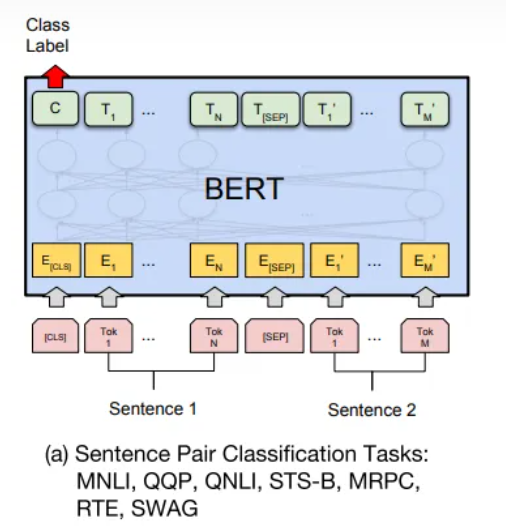
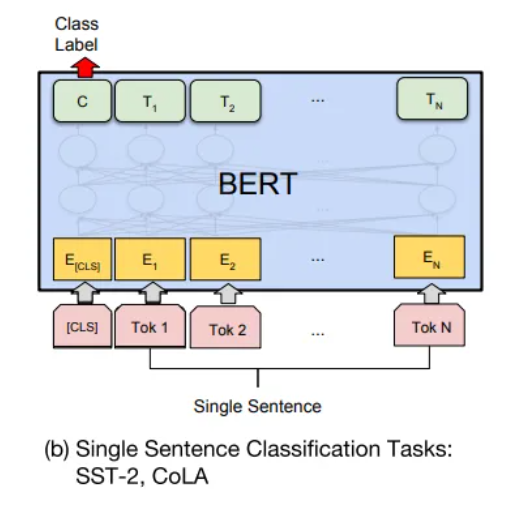
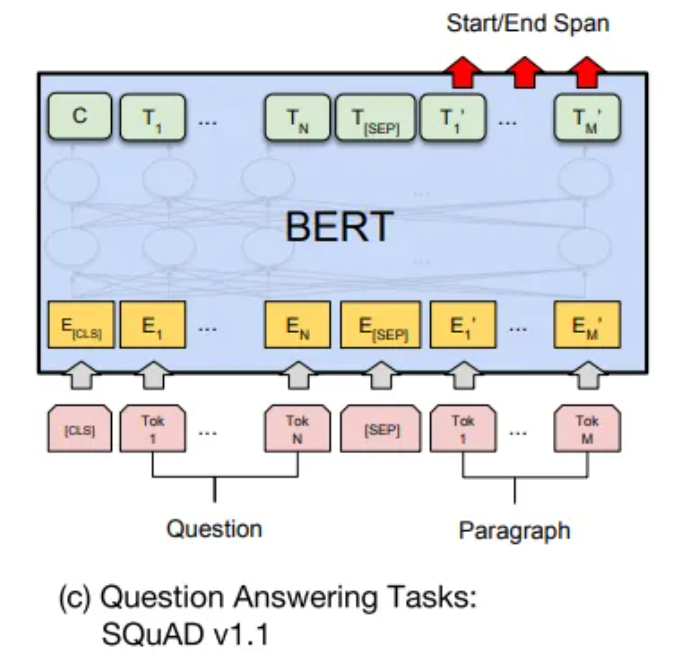
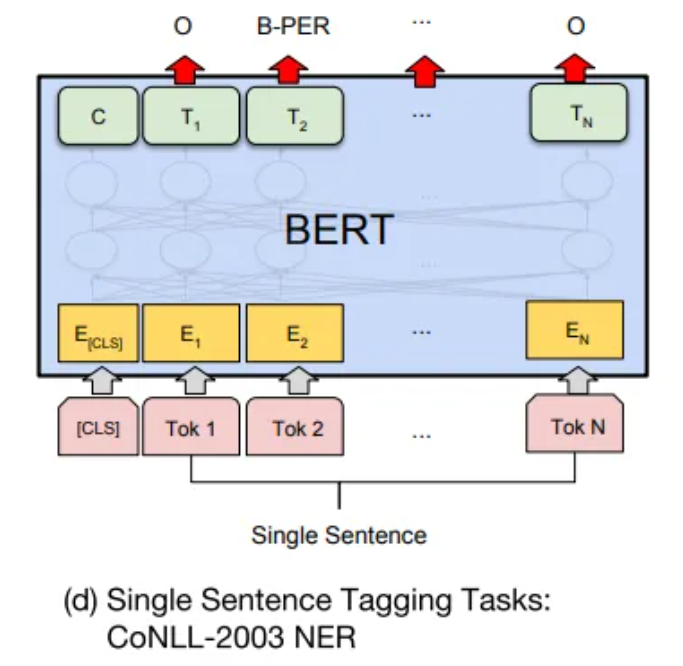
预训练模型
每个 .zip 文件包含三项:
-
包含预训练权重(实际上是 3 个文件)的 TensorFlow 检查点 ( bert_model.ckpt )。
-
用于将 WordPiece 映射到单词 id 的词汇文件 ( vocab.txt )。
-
指定模型超参数的配置文件 ( bert_config.json )。
代码详解
https://github.com/google-research/bert/blob/master/run_classifier.py
输入组成:
- guid: Unique id for the example.
text_a: string. The untokenized text of the first sequence. For single sequence tasks, only this sequence must be specified.
text_b: (Optional) string. The untokenized text of the second sequence. Only must be specified for sequence pair tasks.
label: (Optional) string. The label of the example. This should be specified for train and dev examples, but not for test examples.
相关文章:

Bert详细学习及代码实现详解
BERT概述 BERT的全称是Bidirectional Encoder Representation from Transformers,即双向Transformer的Encoder,因为decoder是不能获要预测的信息的。在大型语料库(Wikipedia BookCorpus)上训练一个大型模型(12 层到 …...
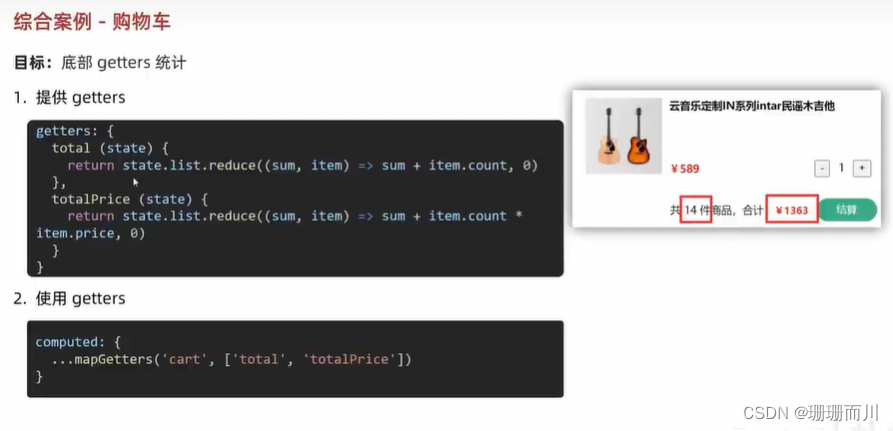
Vue [Day7] 综合案例
核心概念回顾 state:提供数据 getters:提供与state相关的计算属性 mutations:提供方法,用于修改state actions:存放异步操作 modules:存模块 功能分析 https://www.npmjs.com/package/json-server#ge…...
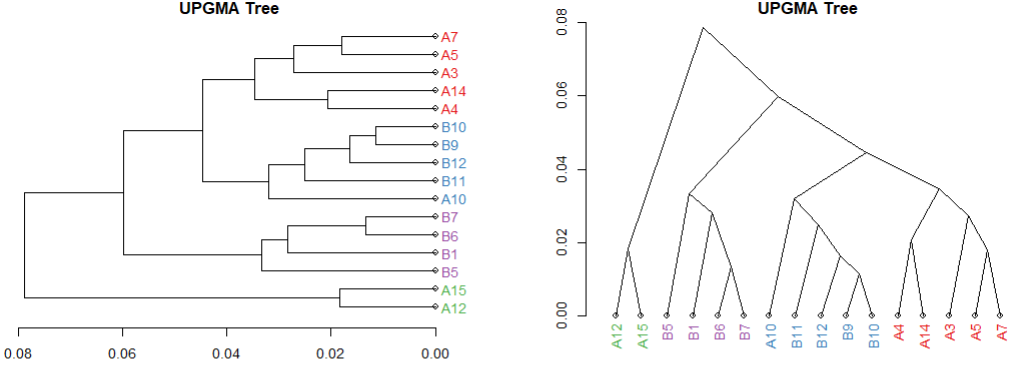
基于R做宏基因组的进化树ClusterTree分析
写在前面 同上一篇的PCoA分析,这个也是基于公司结果基础上的再次分析,重新挑选样本,在公司结果提供的csv结果表上进行删减,本地重新分析作图 步骤 表格预处理 在公司给的ClusterTree的原始表格数据里选取要保留的样本…...

栈和队列修炼指南(基本操作+OJ练习)
栈和队列修炼指南 1. 栈 1. 1 概念及结构 栈:是一种特殊的线性表,其只允许在固定的一端进行插入和删除元素的操作。进行数据插入和删除操作的一端称为栈顶,另一端为栈底。 栈中的数据元素遵守后进先出原则(LIFO)原则 压栈:栈的…...

伪类和伪元素有何区别?
聚沙成塔每天进步一点点 ⭐ 专栏简介⭐ 伪类(Pseudo-class)⭐ 伪元素(Pseudo-element)⭐ 区别总结⭐ 写在最后 ⭐ 专栏简介 前端入门之旅:探索Web开发的奇妙世界 记得点击上方或者右侧链接订阅本专栏哦 几何带你启航前…...

自动测试框架airtest应用一:将XX读书书籍保存为PDF
一、Airtest的简介 Airtest是网易出品的一款基于图像识别和poco控件识别的一款UI自动化测试工具。Airtest的框架是网易团队自己开发的一个图像识别框架,这个框架的祖宗就是一种新颖的图形脚本语言Sikuli。Sikuli这个框架的原理是这样的,计算机用户不需要…...

ValueError:The following settings are not supported :{‘username‘: ‘neo4j“}
py2neo版本不同所导致的问题,下面我通过一段代码说明该问题。 import py2neoif py2neo.__version__ 4.3.0:graph Graph(http://localhost:7474, username config.neo4j_username, password config.neo4j_password) elif py2neo.__version__ 2021.2.3:graph G…...

360安全卫士右下角广告弹窗太多怎么彻底关闭?
360安全卫士右下角广告弹窗太多怎么彻底关闭? 1、卸载360安全卫士,选择继续卸载,并点击下一步; 2、选择广告弹窗太多,并点击下一步; 3、然后被告知升级极速版永久去广告,可以点击一键去广告。 …...
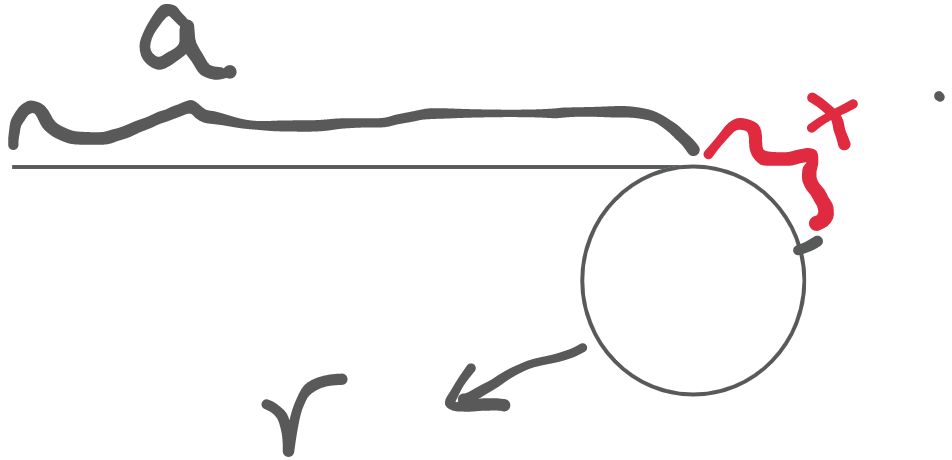
链表有无环以及确定入环口详解
142.环形链表 II 给定一个链表的头节点 head ,返回链表开始入环的第一个节点。 如果链表无环,则返回 null。 如果链表中有某个节点,可以通过连续跟踪 next 指针再次到达,则链表中存在环。 为了表示给定链表中的环,评测…...

chrome插件开发实例08- 使用Vue.js开发chrome插件
目录 背景 演示 功能介绍 插件下载 注意写法: 背景 将 下面的两个插件 改写成vue.js , elementui 实现chrome插件开发实例0...

PCL 计算外接圆的半径
目录 一、算法原理1、计算公式2、主要函数3、源码解析二、代码实现三、结果展示四、参考链接本文由CSDN点云侠原创,原文链接。爬虫自重。 一、算法原理 1、计算公式...
)
Matlab实现神经网络SOM算法(附上完整仿真源码)
神经网络SOM算法是一种基于自组织的无监督学习算法,其全称为Self-Organizing Map,可以用来对数据进行聚类和可视化。本文将介绍如何使用Matlab实现神经网络SOM算法。 文章目录 一、准备工作二、数据准备三、SOM算法实现四、聚类结果分析五、总结六、完整…...
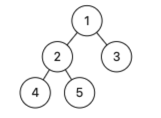
【遍历】非递归法 二叉树的前中后序遍历
文章目录 非递归法前序遍历后序遍历中序遍历 递归法DFS 非递归法 通过栈Stack来模拟递归。 前序遍历 LeetCode 144 前序遍历:1 2 3 定义:存放答案的List、栈Stack 将root入栈出栈:node,为null则舍弃将node放入list将node.r…...

Python将tiff转换成png
文章目录 问题描述解决方案压缩并转换参考文献 问题描述 base64 的 image/tiff 无法在页面直接展示,将其转换为 image/png 解决方案 from io import BytesIOfrom PIL import Imagewith Image.open(a.tiff) as image:bytesIO BytesIO()image.save(bytesIO, format…...

【大数据】-- 部署 Flink kubernetes operator
目录 1.说明 1.1 版本 1.2 kubernetes 环境 1.3 参考 2.安装步骤 2.1 安装本地 kubernetes 环境...
方式)
能够完成两个数的算术运算的单地址指令,地址码指明一个操作数,另一个操作数来自( )方式
【计算机组成原理错题】能够完成两个数的算术运算的单地址指令,地址码指明一个操作数,另一个操作数来自( )方式。 A.立即寻址 B.隐含寻址 C.间接寻址 D.基址寻址 正确答案:B 因为另一个操作数来自于累加器ACC,而这种方式属于隐含寻址。 在指令…...
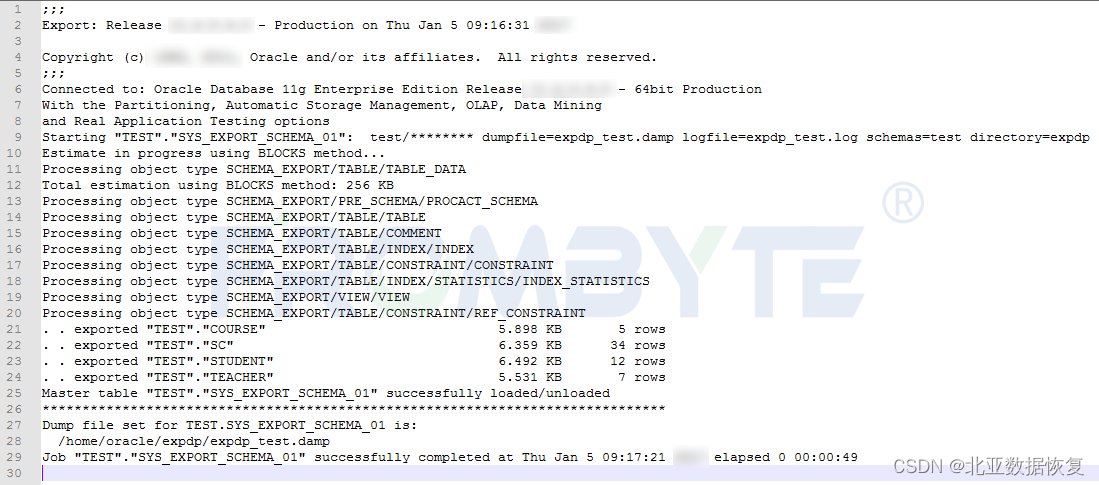
数据库数据恢复-Oracle数据库数据恢复案例
数据库数据恢复环境: Oracle数据库ASM磁盘组有4块成员盘。 数据库故障&分析: Oracle数据库ASM磁盘组掉线 ,ASM实例无法挂载,用户联系我们要求恢复oracle数据库。 数据库数据恢复工程师拿到磁盘后,先将所有磁盘以只…...

对于msvcr120.dll丢失的问题,分享几种解决方法
msvcr120.dll的作用是提供一系列的运行时函数和功能,以便应用程序能够正常运行。这些函数和功能包括内存管理、异常处理、输入输出操作、数学运算等。在没有这个库文件的情况下,应用程序可能无法正常启动或执行特定的功能,甚至会出现错误提示…...

网络安全进阶学习第十三课——SQL注入Bypass姿势
文章目录 一、等号被过滤二、substr、mid等被过滤三、逗号被过滤四、and/or被过滤五、空格被过滤五、其他绕过方式 一、等号被过滤 1、like,rlike语句,其中rlike是正则2、大于号>,小于号<3、符号<>:<>为不等于…...

vue3 provide inject实现强制刷新
1、在 App.vue 文件里写入 provide 的方法 <template> <div id"app"><keep-alive> <router-view v-if"isRouterAlive"></router-view></keep-alive> </div> </template> <script> export default …...

日语AI面试高效通关秘籍:专业解读与青柚面试智能助攻
在如今就业市场竞争日益激烈的背景下,越来越多的求职者将目光投向了日本及中日双语岗位。但是,一场日语面试往往让许多人感到步履维艰。你是否也曾因为面试官抛出的“刁钻问题”而心生畏惧?面对生疏的日语交流环境,即便提前恶补了…...

K8S认证|CKS题库+答案| 11. AppArmor
目录 11. AppArmor 免费获取并激活 CKA_v1.31_模拟系统 题目 开始操作: 1)、切换集群 2)、切换节点 3)、切换到 apparmor 的目录 4)、执行 apparmor 策略模块 5)、修改 pod 文件 6)、…...
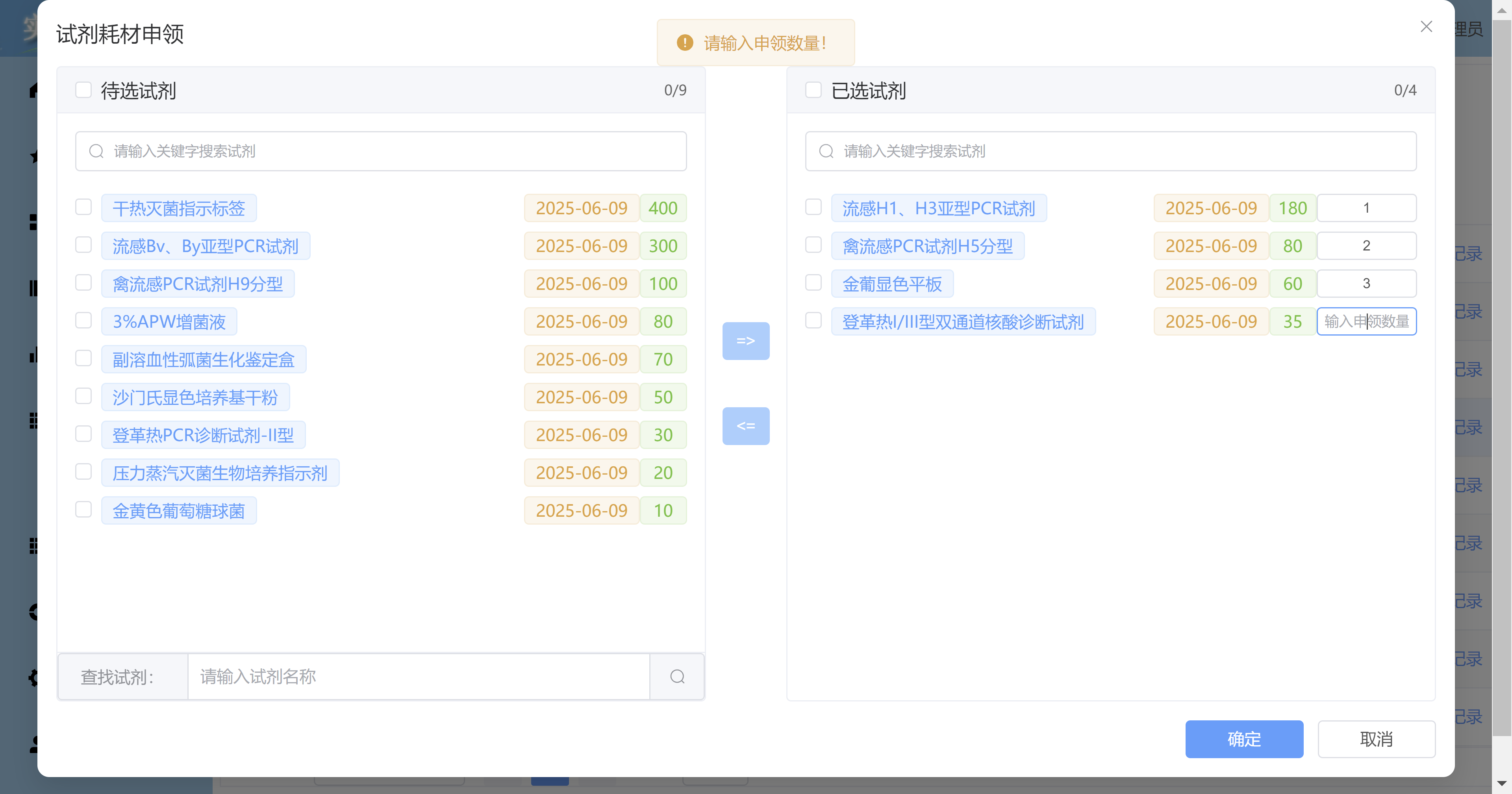
Vue3 + Element Plus + TypeScript中el-transfer穿梭框组件使用详解及示例
使用详解 Element Plus 的 el-transfer 组件是一个强大的穿梭框组件,常用于在两个集合之间进行数据转移,如权限分配、数据选择等场景。下面我将详细介绍其用法并提供一个完整示例。 核心特性与用法 基本属性 v-model:绑定右侧列表的值&…...

关于iview组件中使用 table , 绑定序号分页后序号从1开始的解决方案
问题描述:iview使用table 中type: "index",分页之后 ,索引还是从1开始,试过绑定后台返回数据的id, 这种方法可行,就是后台返回数据的每个页面id都不完全是按照从1开始的升序,因此百度了下,找到了…...
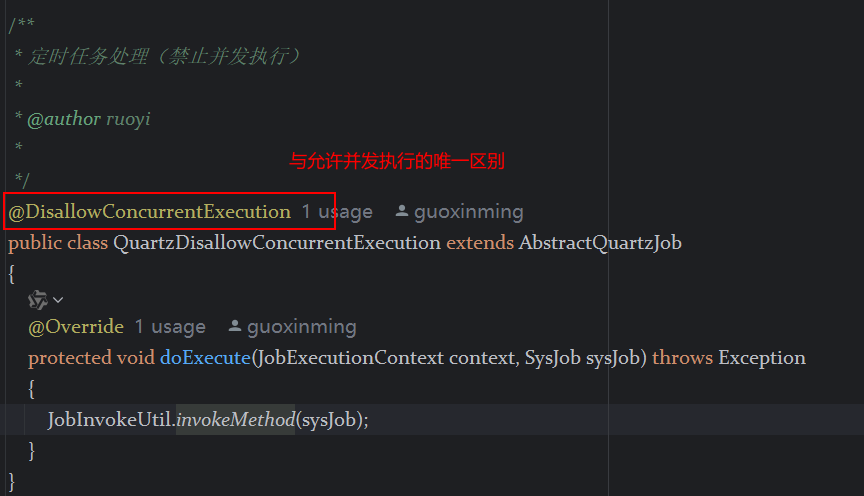
定时器任务——若依源码分析
分析util包下面的工具类schedule utils: ScheduleUtils 是若依中用于与 Quartz 框架交互的工具类,封装了定时任务的 创建、更新、暂停、删除等核心逻辑。 createScheduleJob createScheduleJob 用于将任务注册到 Quartz,先构建任务的 JobD…...

学校招生小程序源码介绍
基于ThinkPHPFastAdminUniApp开发的学校招生小程序源码,专为学校招生场景量身打造,功能实用且操作便捷。 从技术架构来看,ThinkPHP提供稳定可靠的后台服务,FastAdmin加速开发流程,UniApp则保障小程序在多端有良好的兼…...

【快手拥抱开源】通过快手团队开源的 KwaiCoder-AutoThink-preview 解锁大语言模型的潜力
引言: 在人工智能快速发展的浪潮中,快手Kwaipilot团队推出的 KwaiCoder-AutoThink-preview 具有里程碑意义——这是首个公开的AutoThink大语言模型(LLM)。该模型代表着该领域的重大突破,通过独特方式融合思考与非思考…...

C# SqlSugar:依赖注入与仓储模式实践
C# SqlSugar:依赖注入与仓储模式实践 在 C# 的应用开发中,数据库操作是必不可少的环节。为了让数据访问层更加简洁、高效且易于维护,许多开发者会选择成熟的 ORM(对象关系映射)框架,SqlSugar 就是其中备受…...

SpringTask-03.入门案例
一.入门案例 启动类: package com.sky;import lombok.extern.slf4j.Slf4j; import org.springframework.boot.SpringApplication; import org.springframework.boot.autoconfigure.SpringBootApplication; import org.springframework.cache.annotation.EnableCach…...

html-<abbr> 缩写或首字母缩略词
定义与作用 <abbr> 标签用于表示缩写或首字母缩略词,它可以帮助用户更好地理解缩写的含义,尤其是对于那些不熟悉该缩写的用户。 title 属性的内容提供了缩写的详细说明。当用户将鼠标悬停在缩写上时,会显示一个提示框。 示例&#x…...
